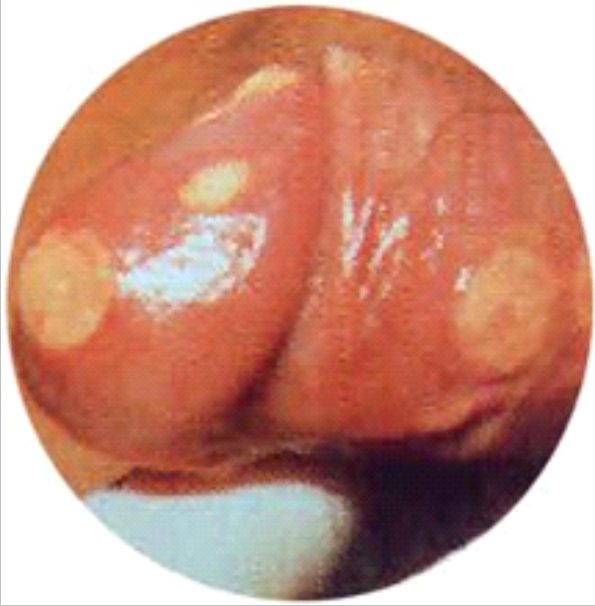Chancroid (Ulcus molle, soft ulcer)

This STD is caused by bacterium Haemophilus ducreyi. Haemophilus is gram-negative, partial anaerobic coccobacillus. Chancroid incubation period may last 3 - 7 days. It is common disease in Africa but in Europe we can see it very rarely. At the beginnig of the infection an erythematous papular lesion appears in anogenital area. Lesion progresses in pustule and finally in soft ulcer. The ulcer is 2 cm large and very painful. Solitary type of ulcer is more common than multiplex type. It has a necrotic base and ragged edge. It can bleed and perforate that ends with formed fistula. In 2 weeks genital glands are swollen and become very painful (regional lymfadenitis).
Diagnosis is made by culturing bacterium on a chocolate agar. Material for diagnosis is taken from the bottom of the ulcer. Then the colony is put under microscope, where small chains of microorganism are seen.
Syphilis a herpes simplex should by considered in making the differential diagnosis. When Treponema pallidum and Haemophilus ducreyi are found in the ulcer, then it is called ulcus mixtum.
Treatment:
Haemophilus ducreyi is sensitive to antibiotics - macrolides like azithromycin and a third-generation cephalosporins like ceftriaxon. Untreated infections end with anogenital deformations.
Open discussion on the topic
Similar interests
- Nuovi Casino
- Casinos Not On Gamstop
- UK Casinos Not On Gamstop
- Casinos Not On Gamstop
- UK Casinos Not On Gamstop
- Casino Non Aams Italia
- Slot Sites Not On Gamstop
- Meilleur Casino En Ligne
- Non Gamstop Casino Sites UK
- Meilleur Casino En Ligne
- Casino En Ligne France
- Best Non Gamstop Casinos
- Casinos Not On Gamstop
- UK Casino Not On Gamstop
- Casinos Not Signed Up To Gamstop
- Best Slot Sites UK
- Non Gamstop Casino Sites UK
- Online Casinos Nederland
- Online Casinos Nederland
- Casinos Not On Gamstop
- Best New Uk Casinos Not On Gamstop
- Casino Non Aams
- Non Gamstop Casinos UK